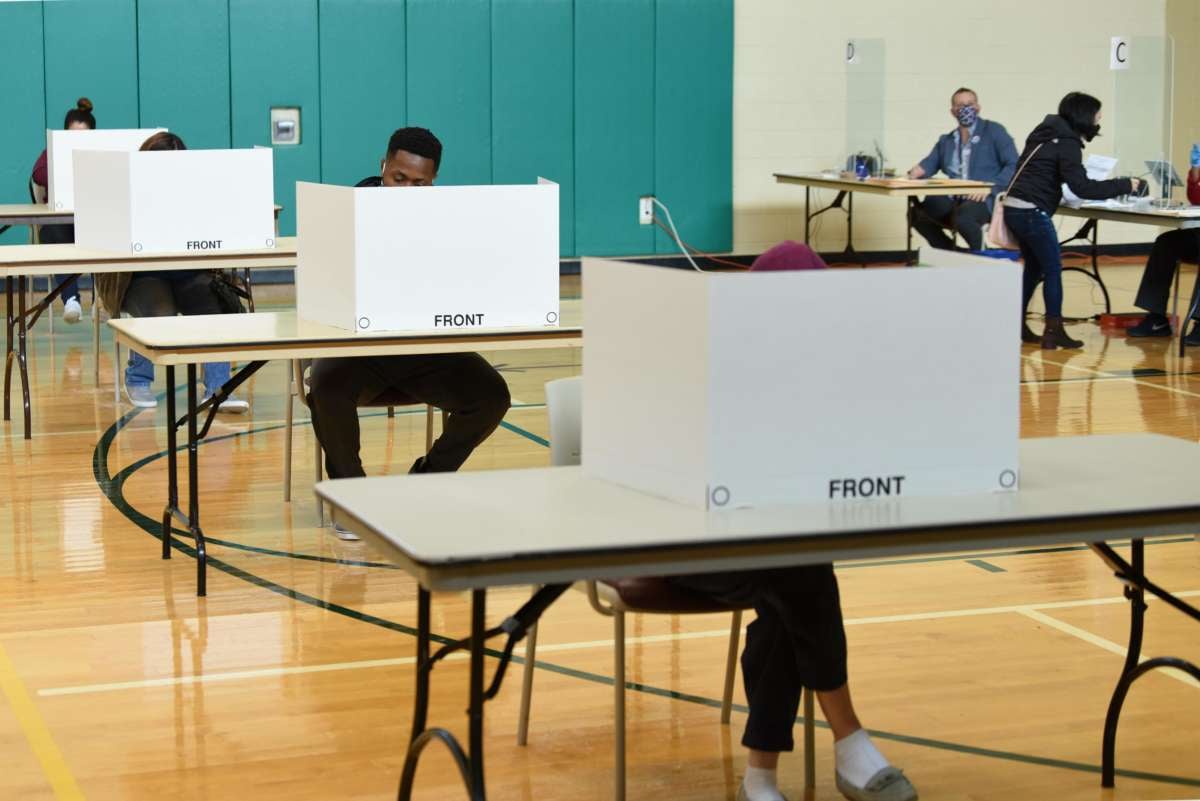In 2016, the total vote out of Harris County, Texas, home to Houston, was 1.3 million. In Dallas County, it was 770,000. In Travis County, home of the city of Austin, over 477,000. Four years later, 485,000 people had voted in the county by October 28th, six days before Election Day, more than the total vote in 2016. In every other major metropolitan area in Texas, including the counties in the west of the state that almost catapulted Beto O’Rourke into the Senate in 2018, nearly as many people had voted by Wednesday evening as had voted in total in 2016, and more than had voted in the mid-terms in 2018. By Friday morning, the last day of early voting in the Lone Star state, the entire state had exceeded its 2016 vote totals. By Saturday morning, it was at 107 percent of its 2016 vote total, with virtually every large metro area exceeding the totals from four years ago.
This is utterly unprecedented, suggesting that by Tuesday night Texas’ electorate will have expanded by perhaps a couple million votes; and it makes it extremely difficult to predict the outcome in that crucial state, since polling models assume a far lower percentage of registered voters actually voting than is likely to be the case. What we do know, however, is that for the past month, Texas has been seen by pollsters as a competitive swing state. And we also know that the GOP has taken the Lone Star state largely for granted, not building up a large voter registration or voter mobilization operation there. It’s a decision they may come to rue.
Massive early voting numbers in Georgia — where early voting ended Friday evening (as it did in Texas) — especially among Black voters, suggest a similar surge in participation to that in Texas is possible. The same story holds in North Carolina. In both of these states, early voting totals by Saturday evening were well north of 90 percent of the 2016 election vote tallies, and in urban counties that vote heavily Democratic, turnout was closer to 100 percent of the 2016 totals by Saturday night.
The same story holds out in the key swing state of Arizona, where huge numbers have voted early statewide, including in Maricopa County (Phoenix) and in Pima County (Tucson). Perhaps most significantly, throughout the state, many more young people had voted by October 28th, with two days left of early voting, and Election Day itself still ahead — than voted in the entire election cycle in 2016. That surge in the youth vote has also been seen in Texas, in Georgia and in Florida, according to the LA Times, as well as in many parts of the mid-west. This could well be critically important, since Biden has a roughly two-to-one lead among voters in the 18-29 age group nationally.
In Pennsylvania, far more Democrats have returned requested mail ballots than have Republicans. But, there is a caveat here: The rate of early voting in Pennsylvania is lower than in most states — more in keeping with much of the northeast, and parts of the deep south, both regions of which have traditionally shied away from early voting, than with the rest of the country. In-person early voting ended one week before Election Day in Pennsylvania, and upwards of 60 percent of voters seem to have decided to wait until election day to cast their votes.
Most states have a gap of at least a couple of days between the end of early voting and Election Day itself. A handful of states, however, including the mega-state of California, as well as the swing states of Iowa and Michigan, barrel right through with early voting all the way till Monday evening. As a result, by Monday night, it’s likely that nearly 100 million people will have already cast their votes, defying every effort — from sabotaging the U.S. Postal Service to restricting Texas counties to one drop-off site per county for early ballots — to suppress voter turnout.
For the past several months, Trump has talked up the prospect of sending armed “poll watchers,” law enforcement personnel and raucous gangs of supporters to polling stations on Election Day. He may find, however, that he is sending them out on a fool’s errand, to intimidate voters who, in the main, in many key states have already cast their votes during the past month of early voting.
Join us in defending the truth before it’s too late
The future of independent journalism is uncertain, and the consequences of losing it are too grave to ignore. To ensure Truthout remains safe, strong, and free, we need to raise $46,000 in the next 7 days. Every dollar raised goes directly toward the costs of producing news you can trust.
Please give what you can — because by supporting us with a tax-deductible donation, you’re not just preserving a source of news, you’re helping to safeguard what’s left of our democracy.
